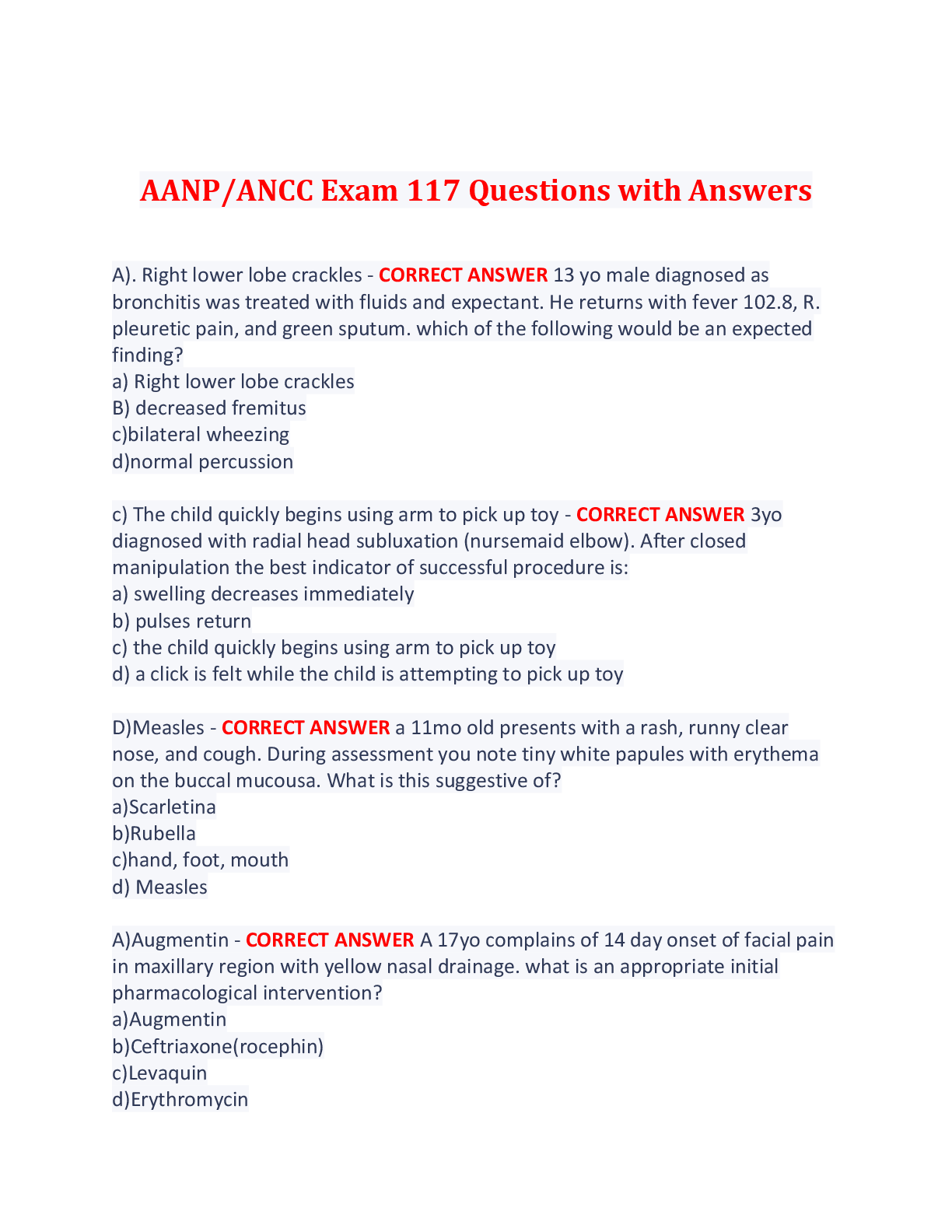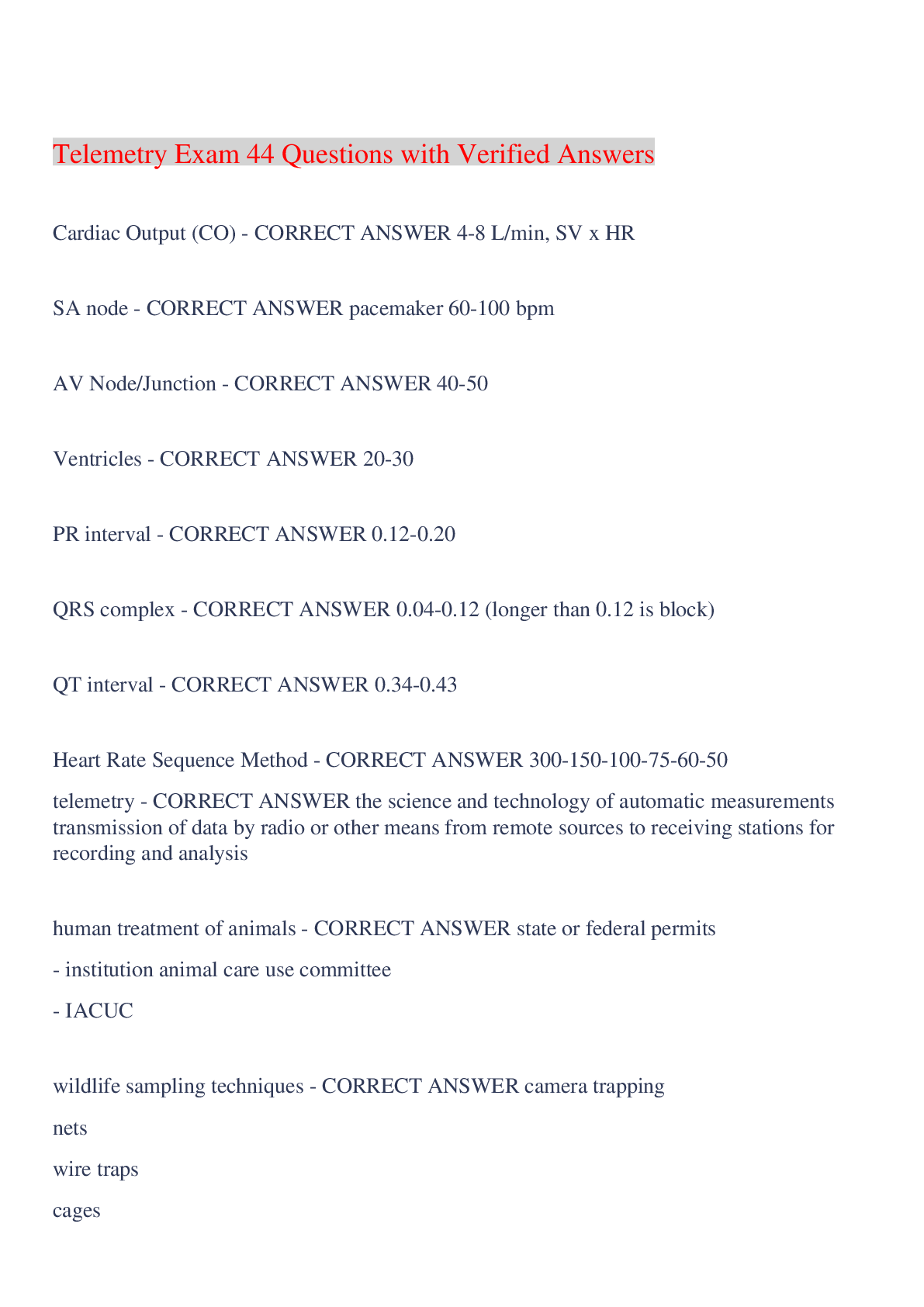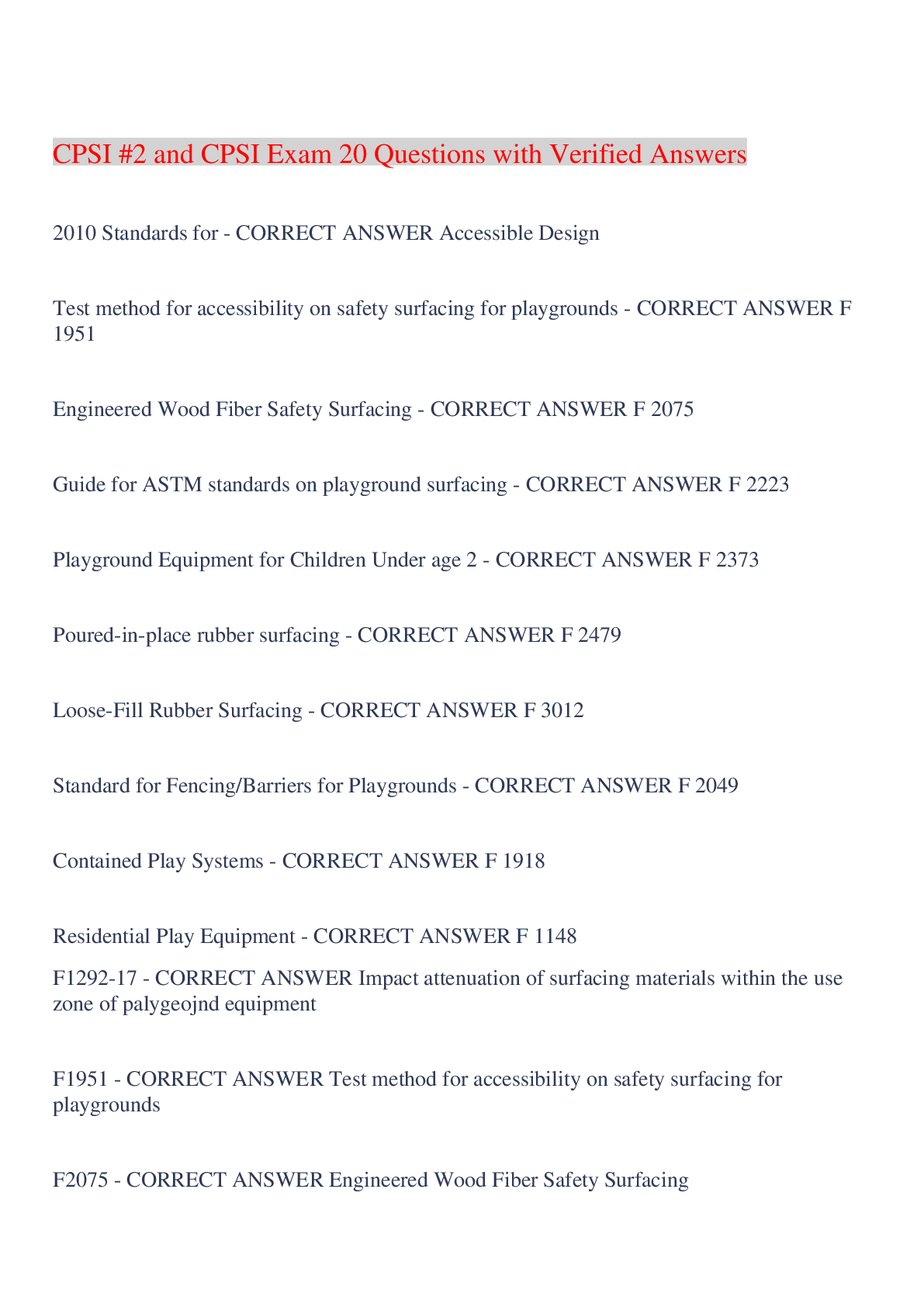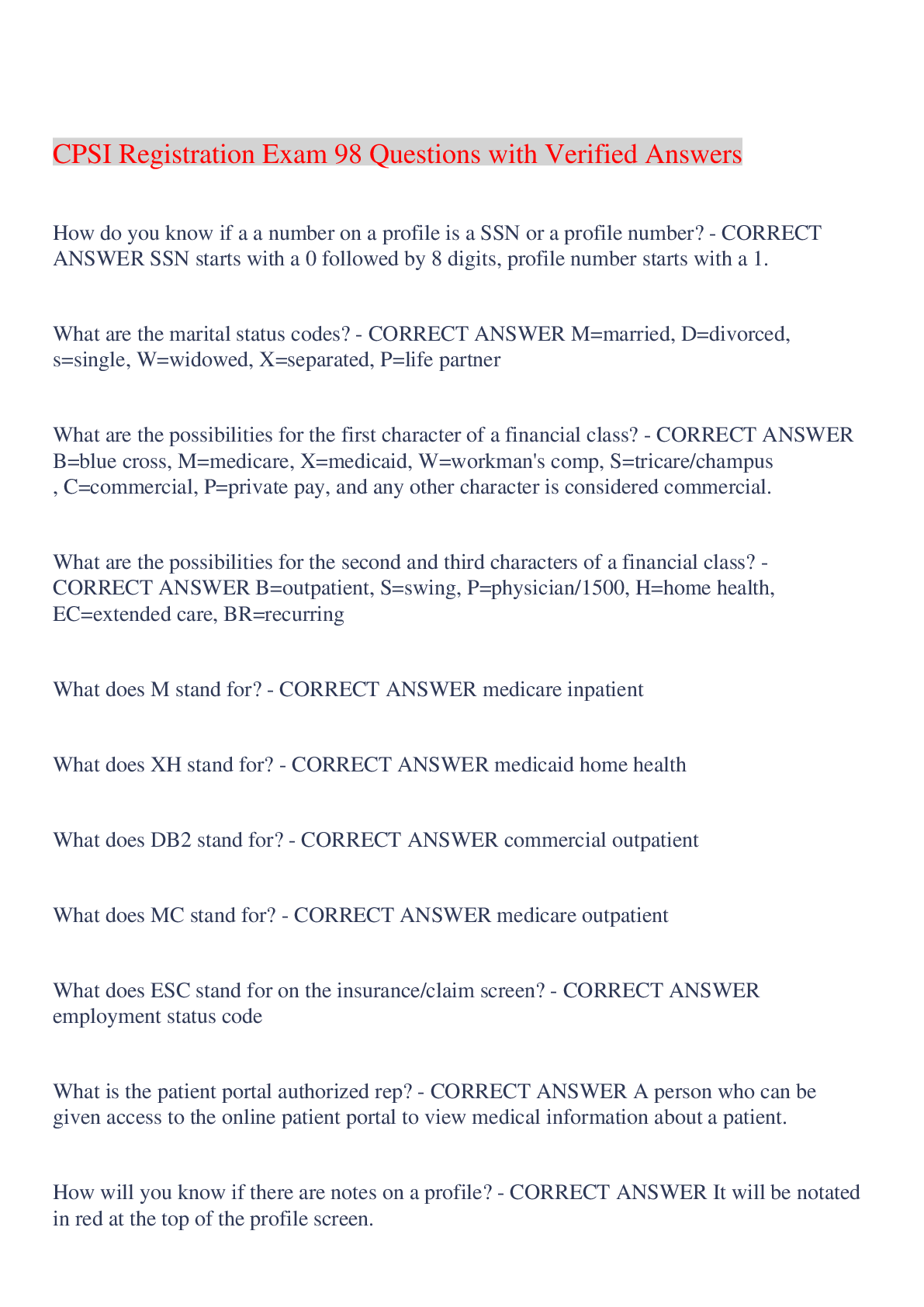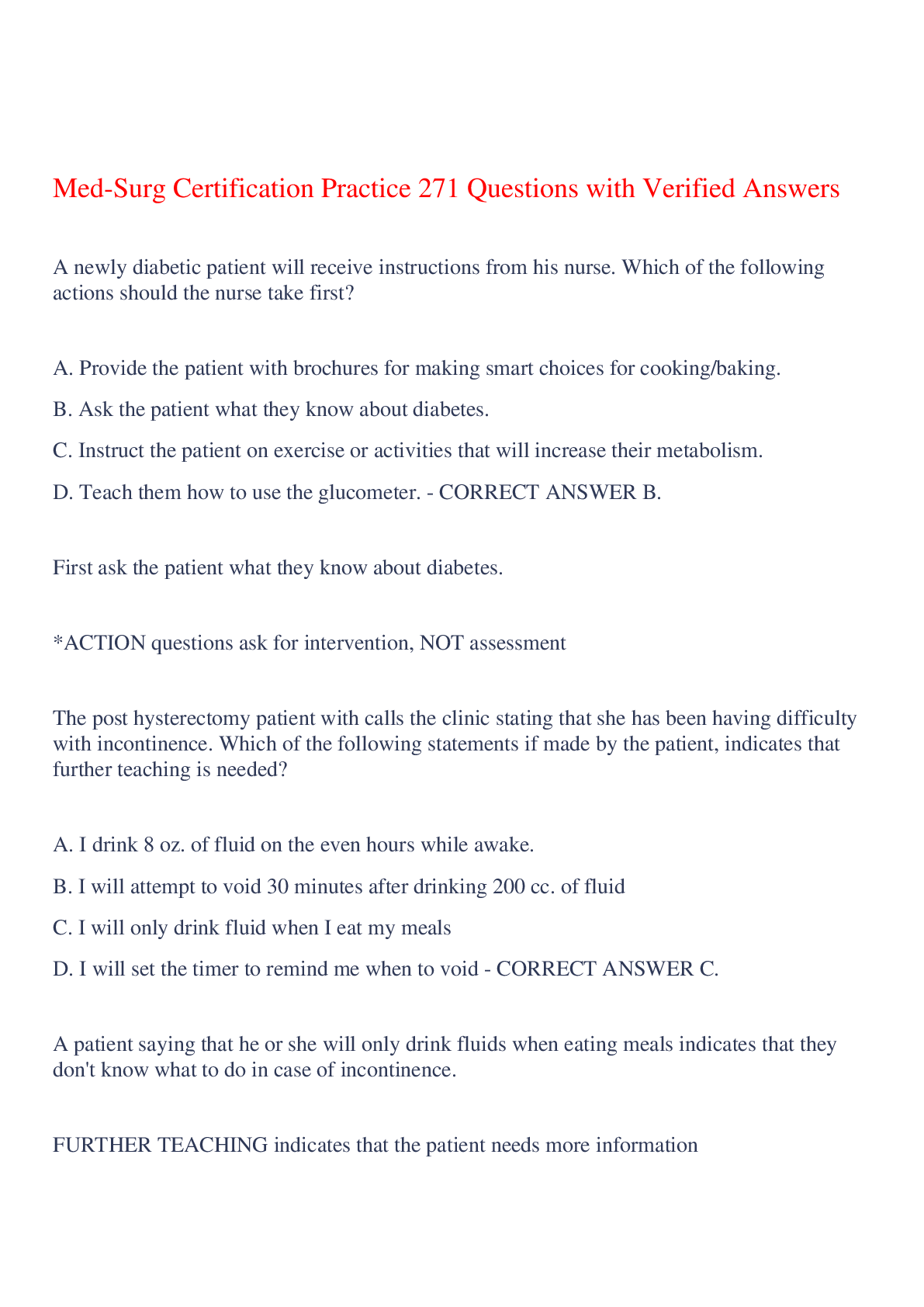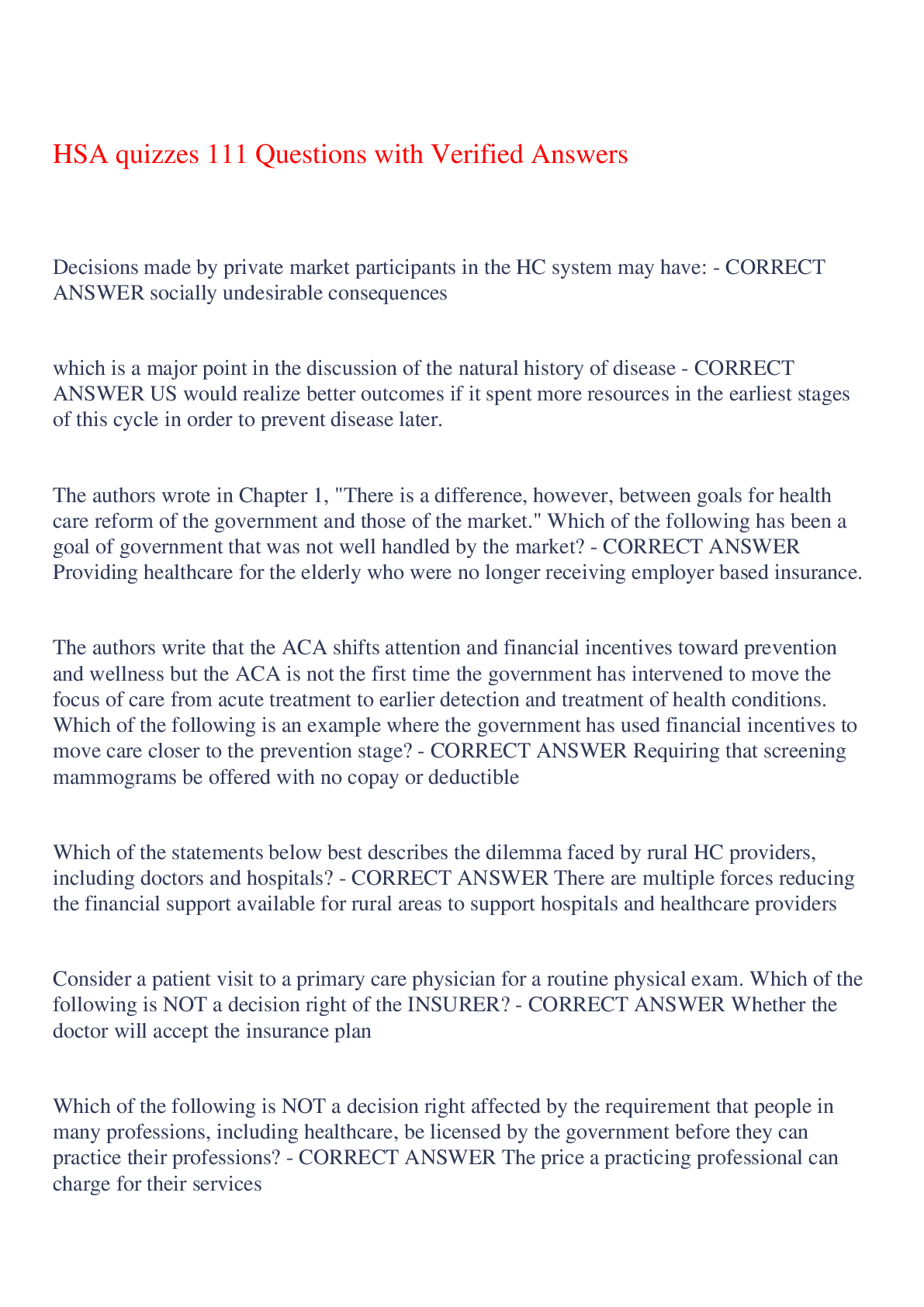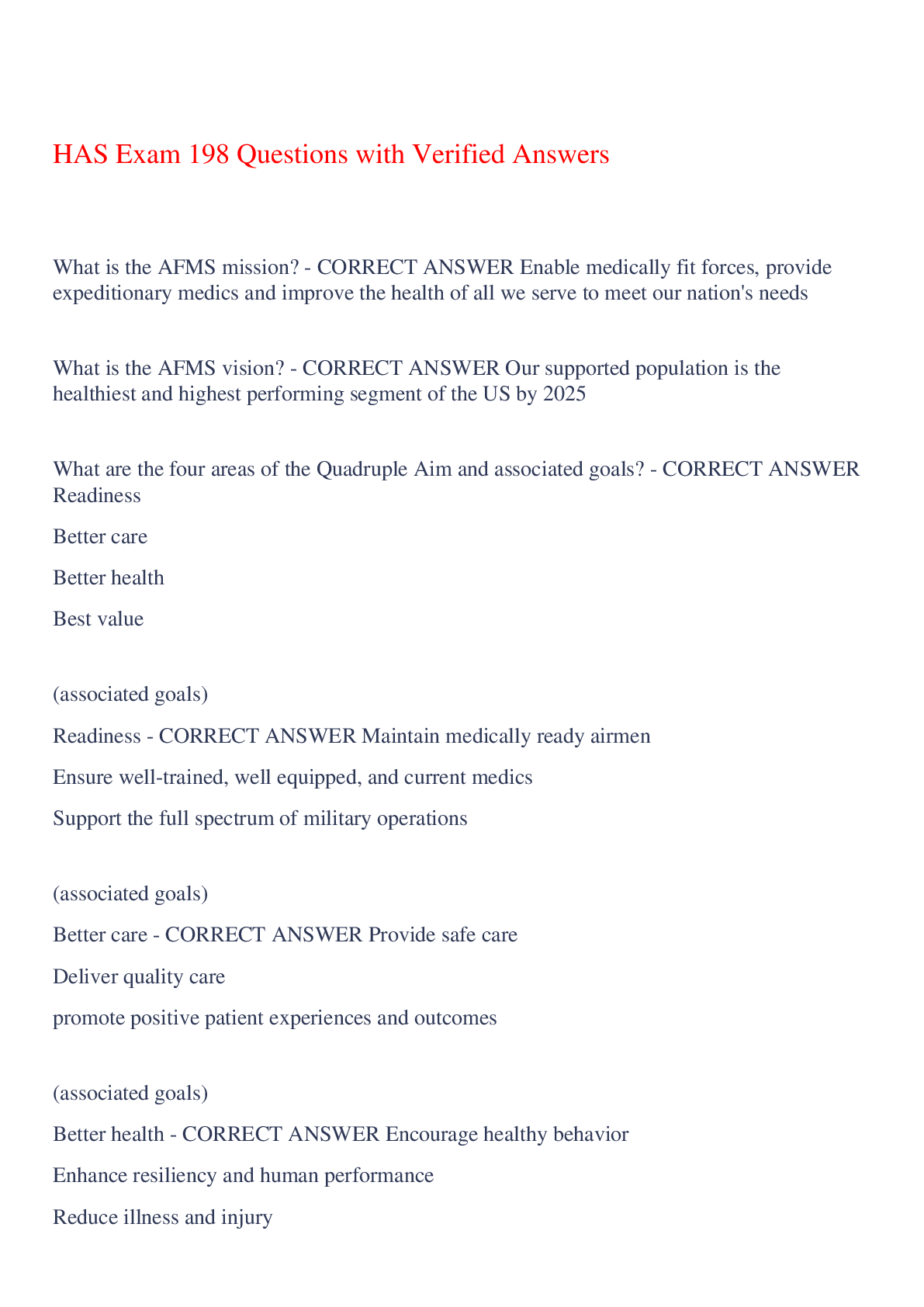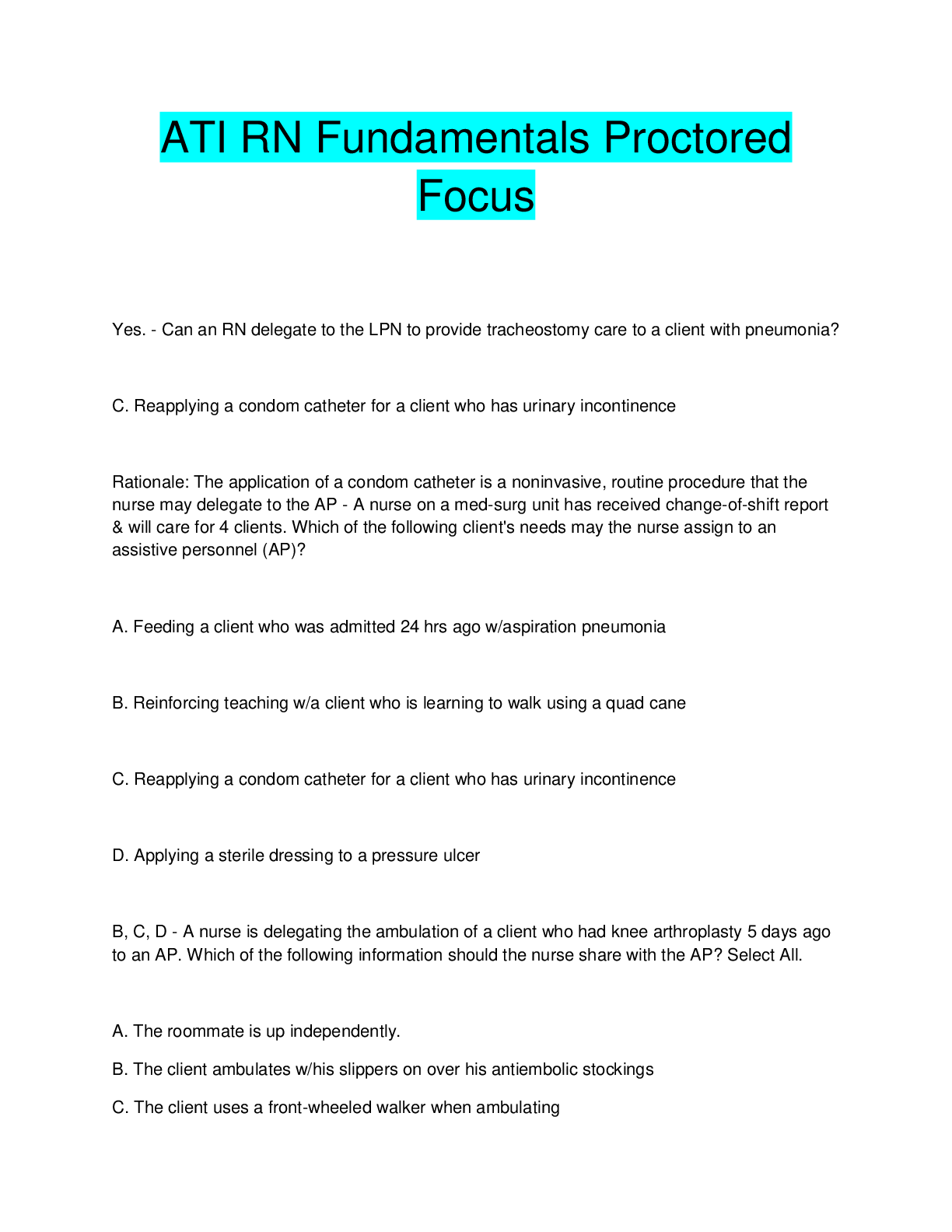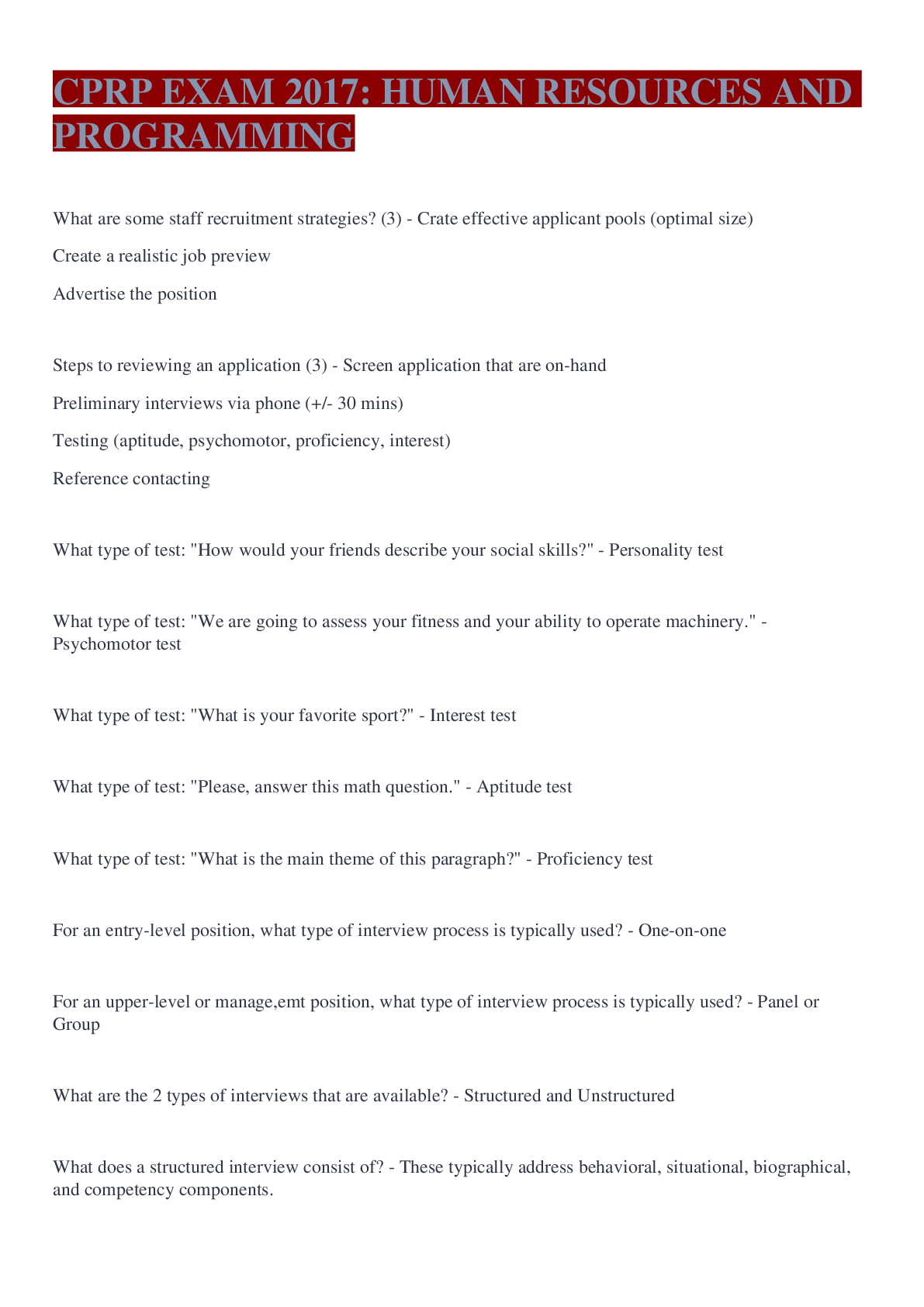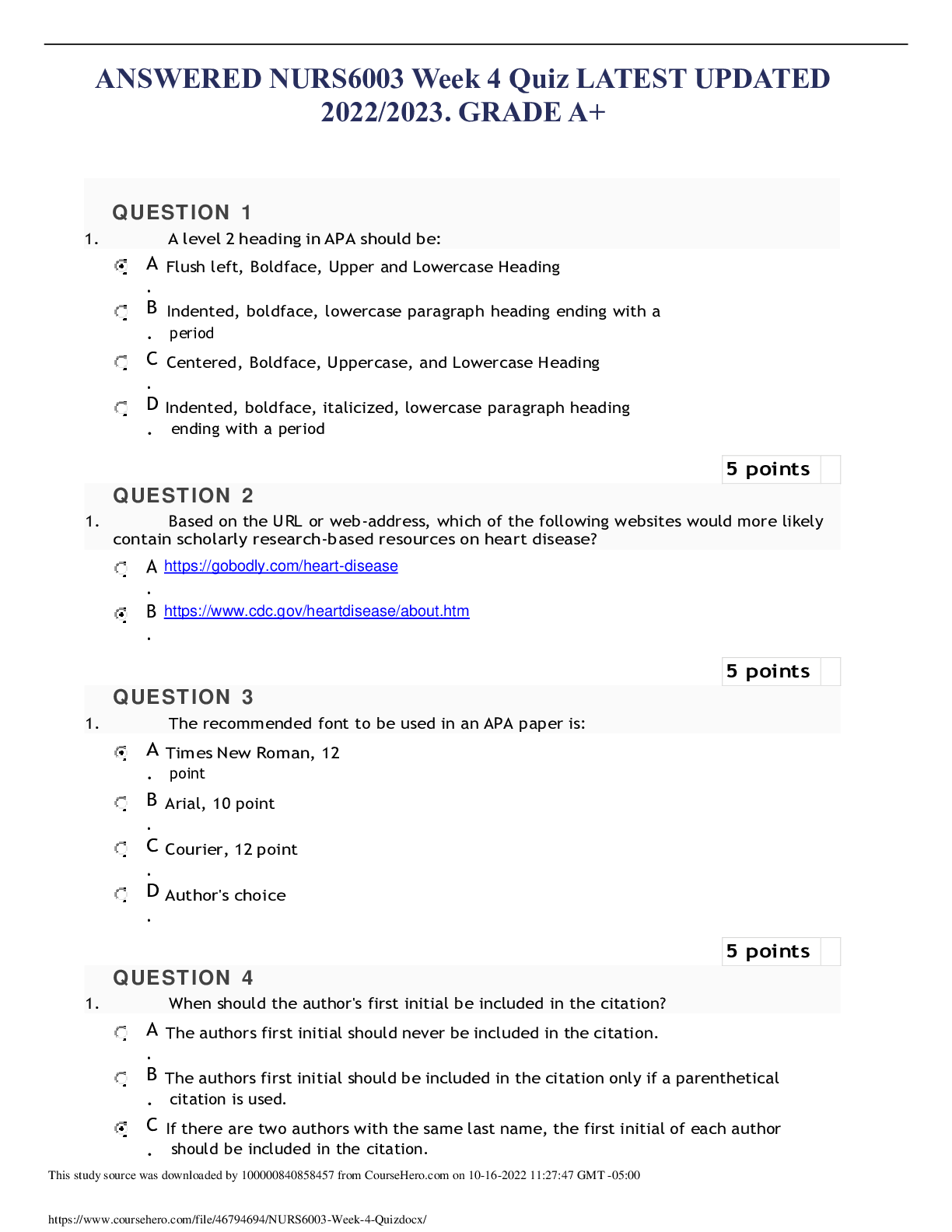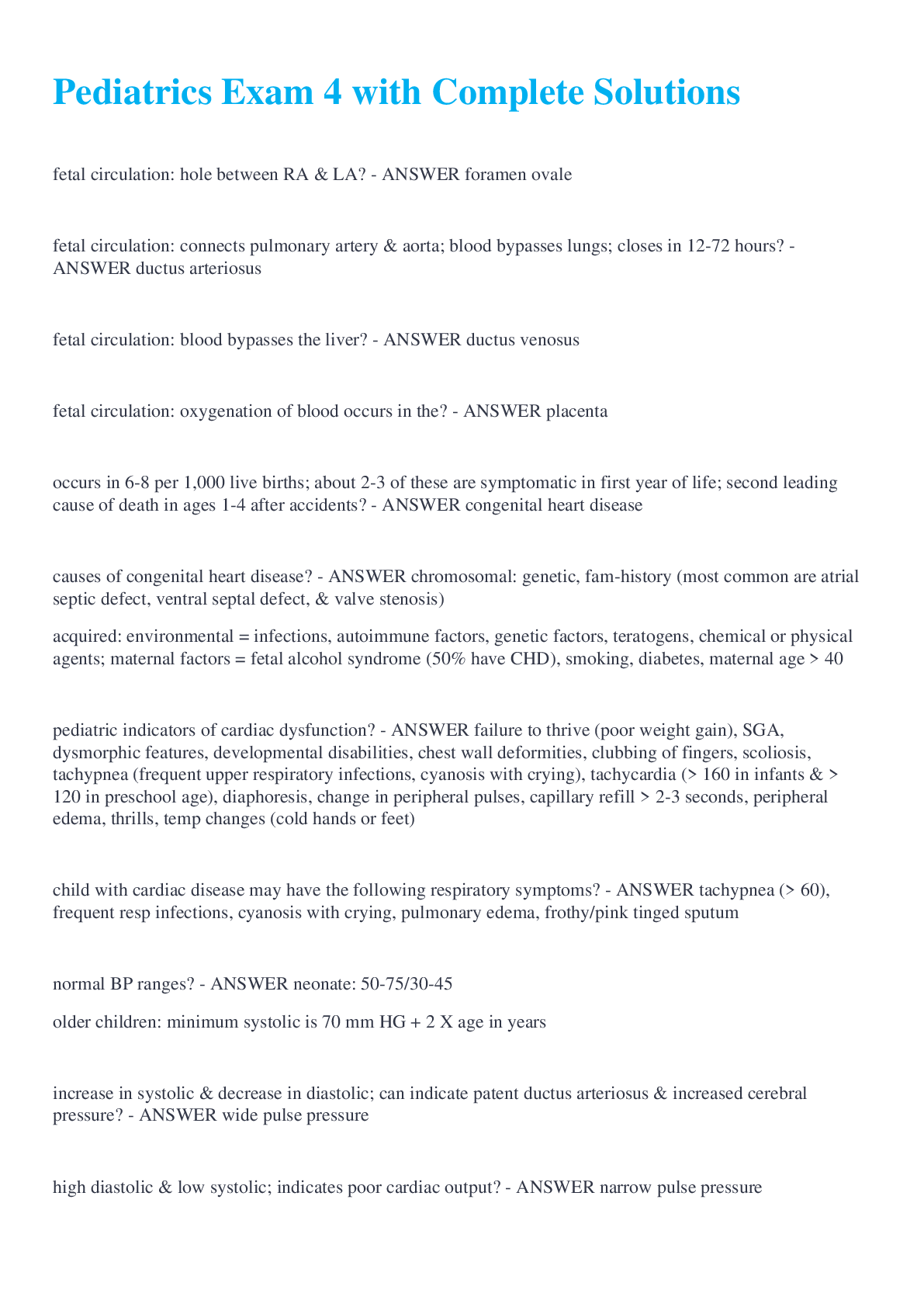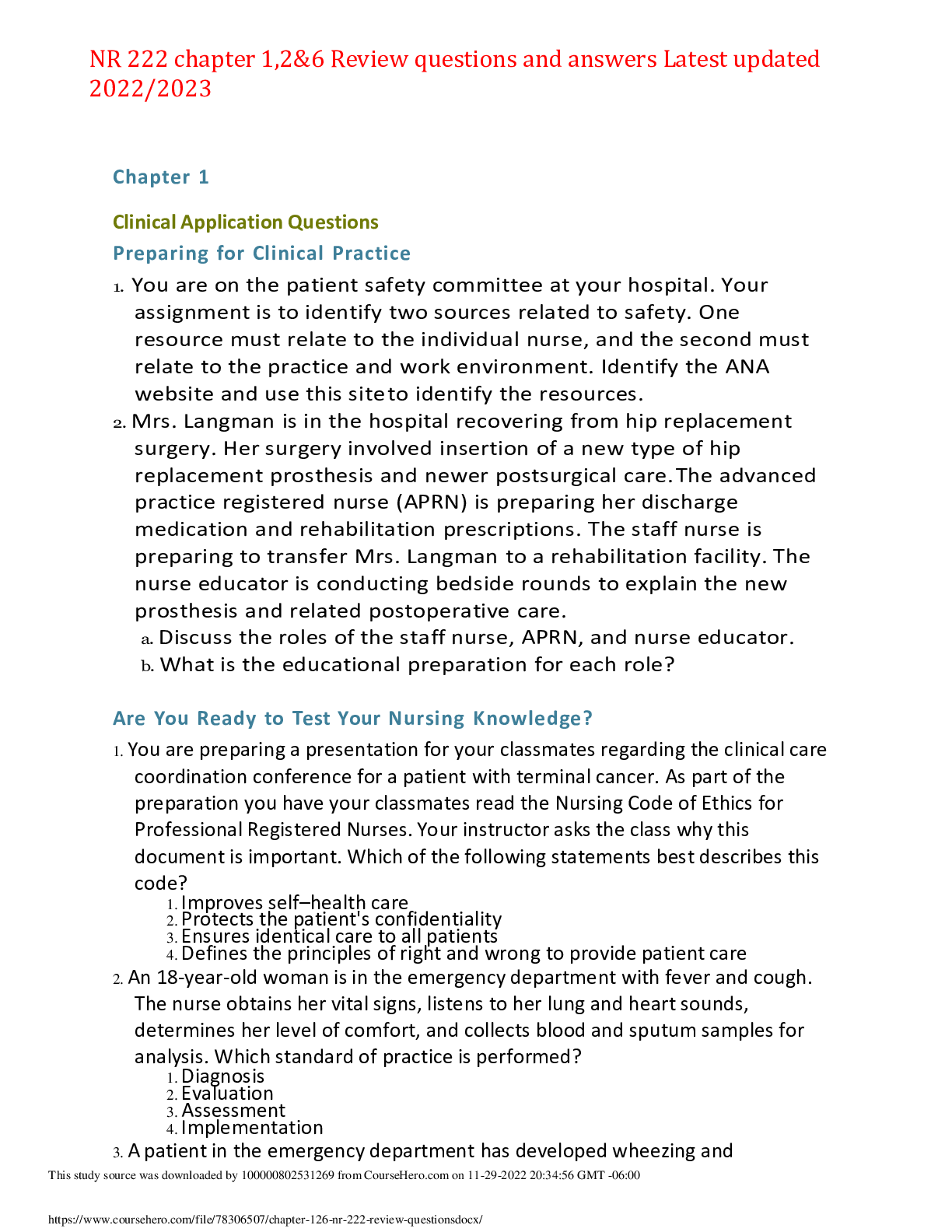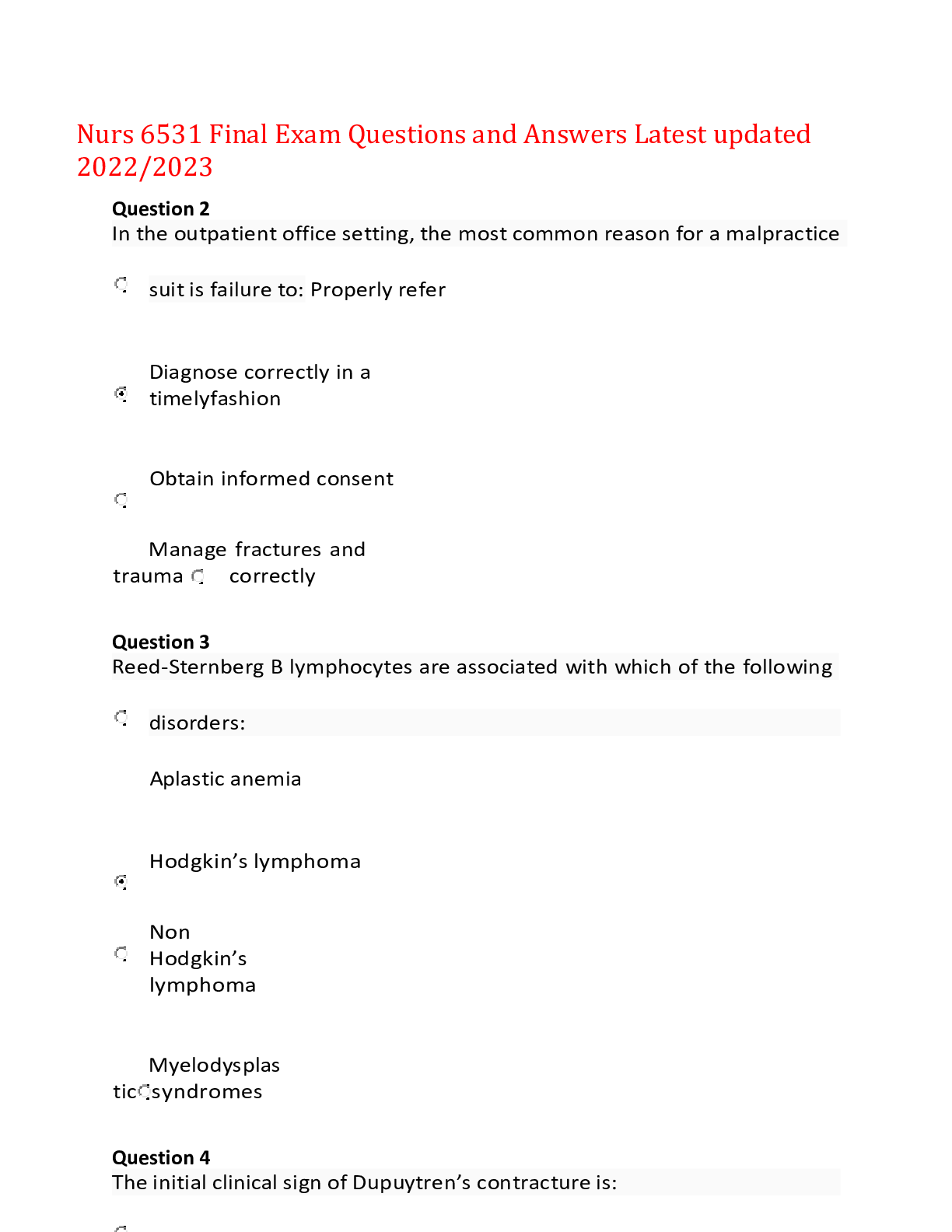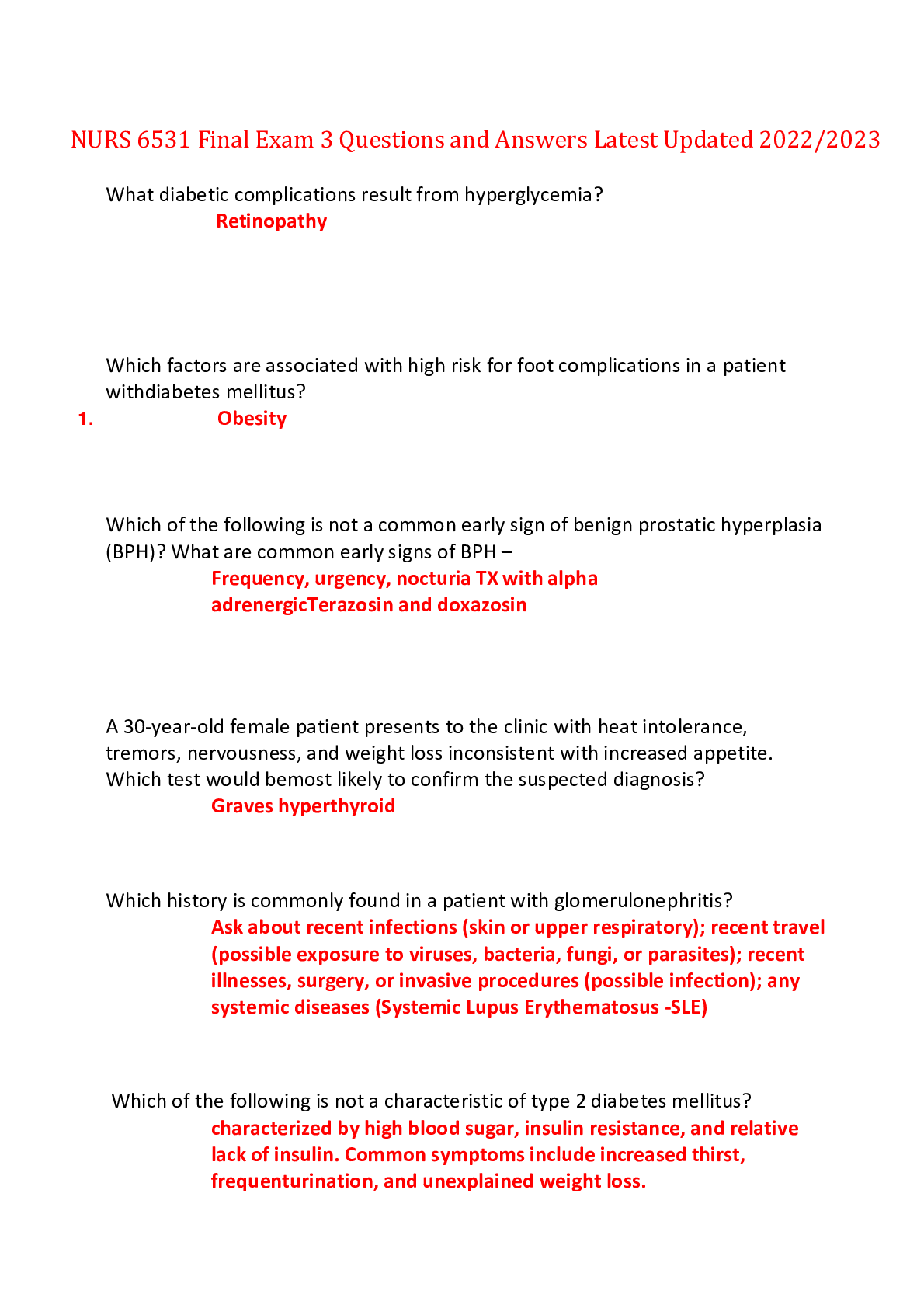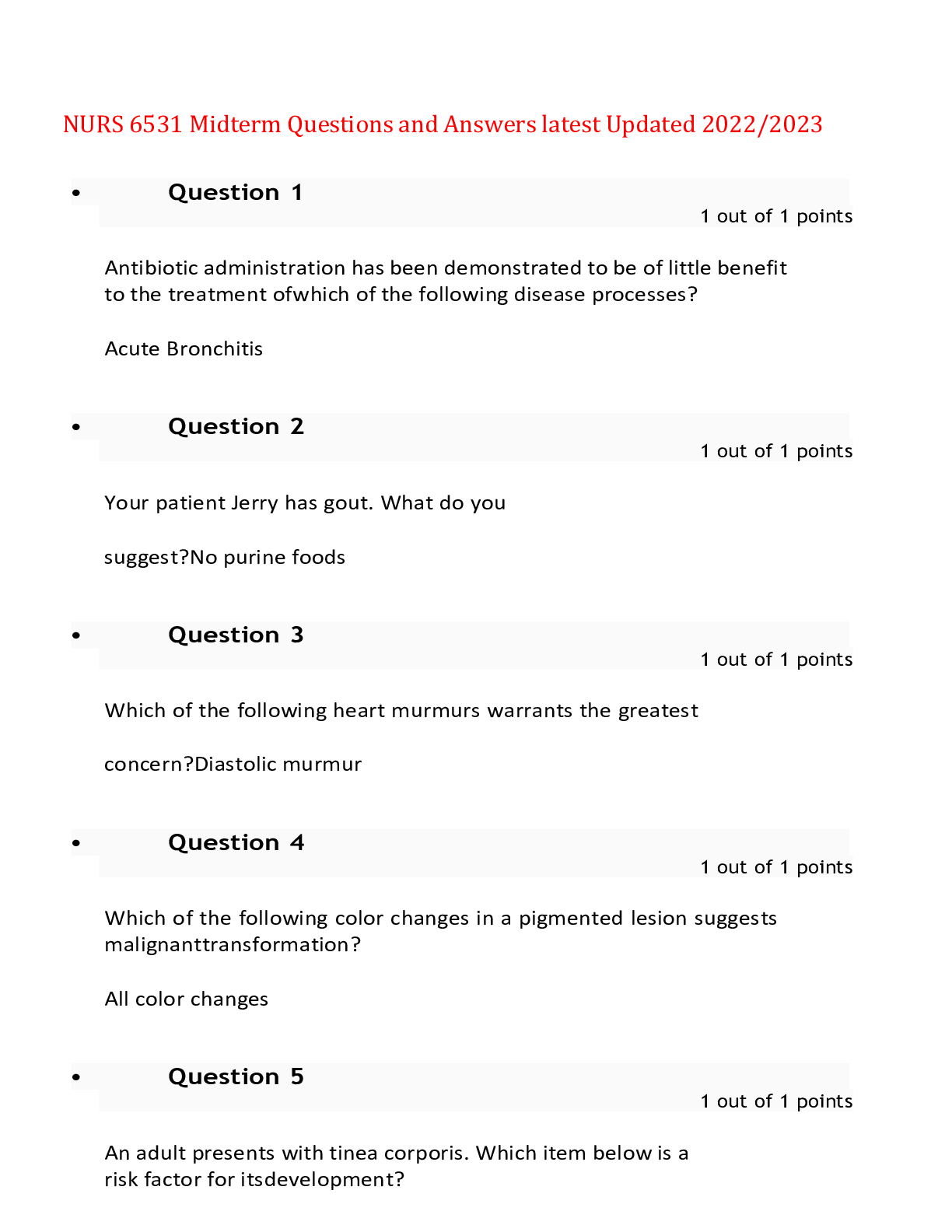NURSING 422 Pediatrics Exam 4 Latest updated 2022/2023
Document Content and Description Below
NURSING 422 Pediatrics Exam 4 Latest updated 2022/2023 • UTIs o Normal Urine output? ▪ 1 mg/kg/hr o How can we prevent UTIs? ▪ Cranberry juice, take off wet bathing suits quickly, don’t t... ake bubble baths, don’t bathe with other children, wipe front to back, voiding schedule o Who is at risk for them? ▪ Girls and kids in diapers. o Difference between diagnosis of UTI and dehydration ▪ UTI- leukocytes ▪ Dehydration- specific gravity • Glomeruli nephritis o Symptoms ▪ Sudden onset of gross hematuria, proteinuria, oliguria, HTN, edema, joint pain, pulmonary edema, abdominal pain, impaired renal function, ascites o Who is at risk? ▪ After bacterial infection o Understand pathophysiology of what is happening ▪ Inflammation of the glomerular o Why do they have symptoms? ▪ Damage to glomeruli • Nephrotic syndrome o Who is at risk? ▪ Children between 2-5 years ▪ After upper respiratory infection o Symptoms ▪ Renal disease, proteinuria, hypoalbuminemia, swelling, hyperlipidemia, swelling around the face, ankles, scrotum, and abdomen. ▪ First sign is swelling around the kid’s eyes, ankles, and feet • Some mothers may mistake this as allergies. • Primary Enuresis o Difference between primary and secondary ▪ Primary- child has never experienced dryness- never potty trained ▪ Secondary- was potty trained for a time and now he is not, there is a cause • Causes- DM, decreased bladder capacity, UTI, constipation o How to treat ▪ Behavior modifications, no drinking 2-4 hours before bed, go to the bathroom before bed, wake up child before parents go to bed and use the bathroom again, set another alarm for 4am, ▪ DDABP medication- dries kid up • Secondary Enuresis o How to treat ▪ Treat the underlying cause • Testicular torsion o What is it ▪ Twisting of the testicle, reducing blood flow o How to treat it ▪ Prepare for surgery ▪ Provide for pain management o Symptoms ▪ Painful scrotal swelling pain in lower abdomen, nausea, vomiting, severe pain, testicular swelling, affected testis will be slightly elevated • Diabetes mellitus o Understand education and why you are having symptoms ▪ Education • Get flu vaccine, wash hands, and avoid sick people o Sick day rules ▪ Still take insulin even if you are not eating, stress causes elevated glucose levels o How to recognize DKA ▪ Polyuria, weakness, excessive thirst, generalized abdominal pain, confusion o Diabetes II lifestyle changes ▪ Exercise, diet low in complex sugar and carbs o Know difference between type 1 and 2 ▪ Type I is an insulin deficiency ▪ Type II is an insulin resistance o Who is at risk of DKA? ▪ Usually type I diabetics but type II can still go into DKA, patients that are sick. o What are diabetics at risk for ▪ Heart disease, neuropathy, blood vessel disease, damage to kidneys, damage to eyes, increased risk of infection o How to give insulin ▪ Subcutaneous injection, pinch, do not aspirate, in the stomach or back of the arm. o Symptoms of DKA ▪ Nausea, vomiting, abdominal pain, confusion, fatigue, fruity breath, and excessive thirst o Tests ▪ A1C, fasting glucose • Bronchiolitis o What is it? ▪ RSV o Why do we have symptoms? ▪ Copious secretions in the nose and throat o What are worsening symptoms ▪ Grunting with exhalation, tripoding, decreased breath sounds • Hypothyroidism o Symptoms ▪ Morbidly obese, delayed growth, everything in the body is slow or underactive, constipation, sleepy, muscle aches, teeth are slow to erupt, large fontanels, large tongue o Treatment ▪ Levothyroxine. • Hyperthyroidism o Symptoms ▪ Extreme mood swings, restlessness, inability to focus on school, increased appetite with weight loss, tired, increased heart rate, fine hair o Treatment ▪ Remove the thyroid, blast with iodine and then place on thyroid hormones o Characterized by low TSH • Scarlet fever o Symptoms ▪ Strep throat with a rash o Causes ▪ Group A streptococcus ▪ Can be spread for 10 days without treatment • Coxsackie virus (hand-foot-and-mouth Disease) o What is it? ▪ Coxsackie virus or enterovirus o Symptoms ▪ High fever, small vesicles in mouth, hands, and feet. o Who is at risk? ▪ Young children but adults can still get it o Treatment ▪ No treatment needed. Cold foods and fluids for sore mouth and throat, no acidic or spicy foods, acetaminophen or ibuprofen for fever and pain • Fifth disease o What is it ▪ Human parvovirus o What does it look like? ▪ Slapped cheek appearance o Treatment • Influenza ▪ Adequate fluid intake, handwashing, acetaminophen, droplet precautions, supplemental oxygen and blood transfusions may be necessary. o Symptoms ▪ High fever, body aches, chills, nasal congestion, nausea o Treatment ▪ Tylenol or Ibuprofen, adequate fluids, Tamiflu • Measles o Symptoms ▪ Rash, presence of kolpik spots in the mouth • Mumps o Symptoms ▪ Fever, body aches, enlarged salivary glands o Treatment o What is it? ▪ Paramyxovirus • Rubella o German measles o Large red lesions on the skin o • Precocious puberty o What is it? ▪ Malfunction of gonads. causes a young person to go through puberty early. Development of sexual characteristics o Symptoms ▪ o How to support parent? ▪ Parents have to understand that children are still young, while they look 16, they are not that old and need to be treated as children. • Hypoglycemia treatment o 15-15 rule ▪ 15 grams of carbs and recheck glucose in 15 minutes • Type 2 diabetes o Who is at risk? ▪ Individuals with obesity • Differences between thyroid symptoms • Stages of immunity o Active ▪ Natural active ▪ Artificial active- vaccination o Passive ▪ Natural passive ▪ Passive o Herd immunity • MMR vaccine o Who cannot get it? o Who can get it? o What is it? • Renal calculi o Education ▪ Don’t hold urine ▪ Keep hydrated ▪ Nutrition concerns o Treatment ▪ Stent, lithotripsy, hydration • DKA risks o What are we monitoring for? o Why are we monitoring? • Hepatitis B o Transmitted? ▪ By blood or blood products. Sexual contact o What is it? ▪ Severe infection of the liver by the hepatitis B virus • Turners’ syndrome o Signs and symptoms ▪ HTN, osteoporosis, frequent fractures with age, high risk of obesity, insulin resistance, prone to hypothyroidism, short neck, usually effects ovarian function, stubby teeth, scoliosis o Treatment ▪ Manage symptoms • HTN, insulin, echos for the heart, no specific treatment for it • Diabetes insipidus o Signs and symptoms ▪ Kidneys are not able to prevent the excretion of water. Kid’s urine will be dilute, at risk for dehydration even though the urine is clear, specific gravity less than 1.10, antidiuretic hormone deficiency (secreted by pituitary gland) • Lactose intolerance o Symptoms ▪ Frothy diarrhea, abdominal distention, cramping, abdominal pain with excessive flatus • Diet safe for celiac disease o No gluten, wheat, rye, barley, and oats o Cannot eat foods prepared in the same area as gluten • Appendicitis o At risk for ▪ Appendix rupture- sudden relief of pain followed by high fever and dehydration. Necrosis of the bowel- peristalsis slowed or stopped. o Symptoms ▪ Dull pain for a few days, pain in RLQ with rebound tenderness in the LLQ, silent abdomen, anorexia, vomiting, and diarrhea. o Silent abdomen ▪ No bowel sounds due to stalled peristalsis o Diagnosis ▪ CT is gold standard, abdominal x-ray or US, and elevated WBC • Intussusception o Symptoms ▪ Red currant jelly stools, pain, vomiting (due to obstruction), dehydration, o What is it? • Pinworms o What are they? ▪ Parasites that live in the colon, females lay eggs around the rectum at night, causes terrible itching, kids wake up with stool under nails. • Tetanus o When are the vaccines? ▪ TDAP given around 2 months, 4 months, 6 months, 15-18 months, 4-6 years, booster at 11-12 years, and every 10 years as adults unless there has been an exposure every 5 years. Every 5 years if around a baby. [Show More]
Last updated: 2 years ago
Preview 1 out of 7 pages
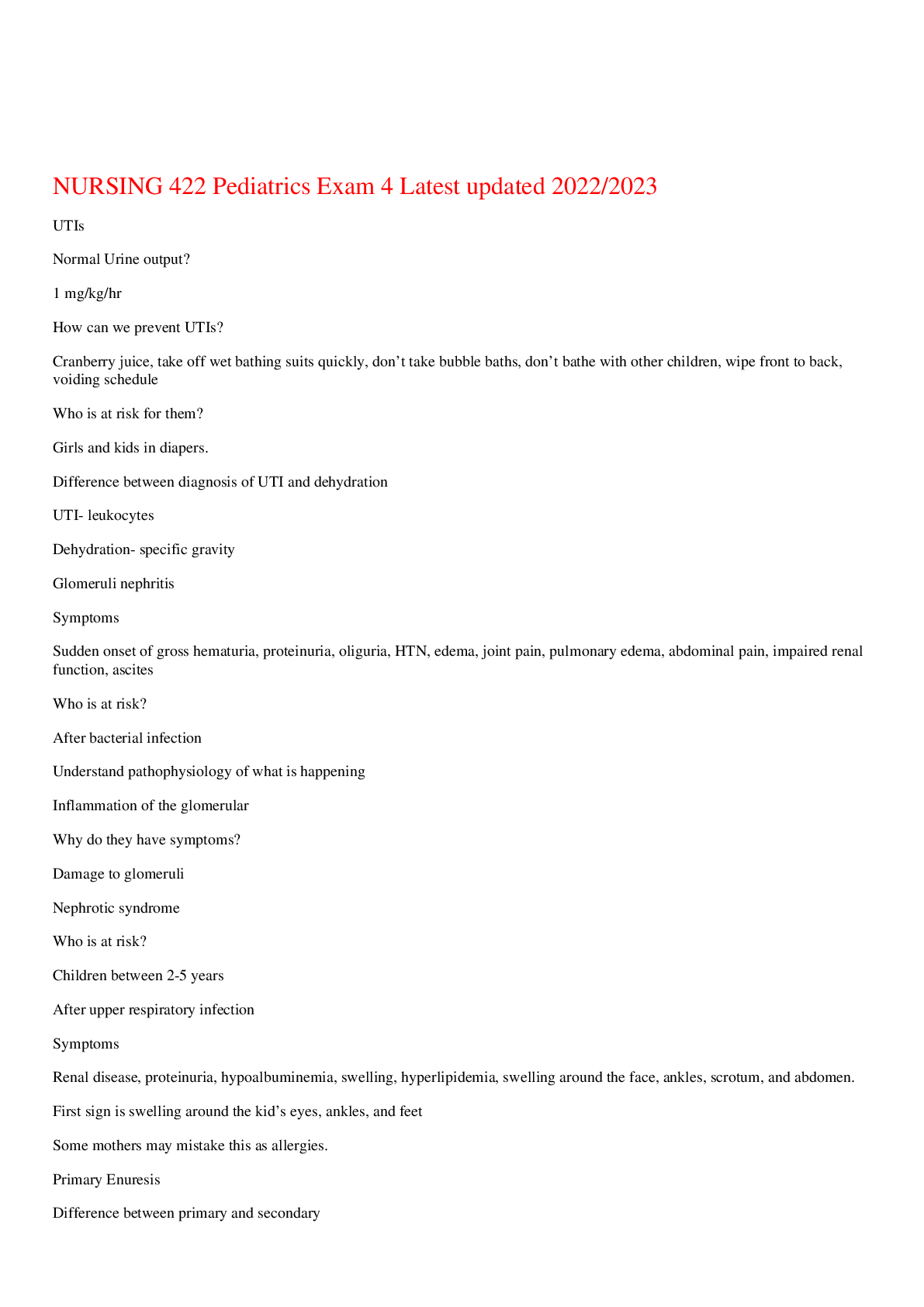
Buy this document to get the full access instantly
Instant Download Access after purchase
Buy NowInstant download
We Accept:

Reviews( 0 )
$15.00
Can't find what you want? Try our AI powered Search
Document information
Connected school, study & course
About the document
Uploaded On
Apr 04, 2023
Number of pages
7
Written in
Additional information
This document has been written for:
Uploaded
Apr 04, 2023
Downloads
0
Views
54


